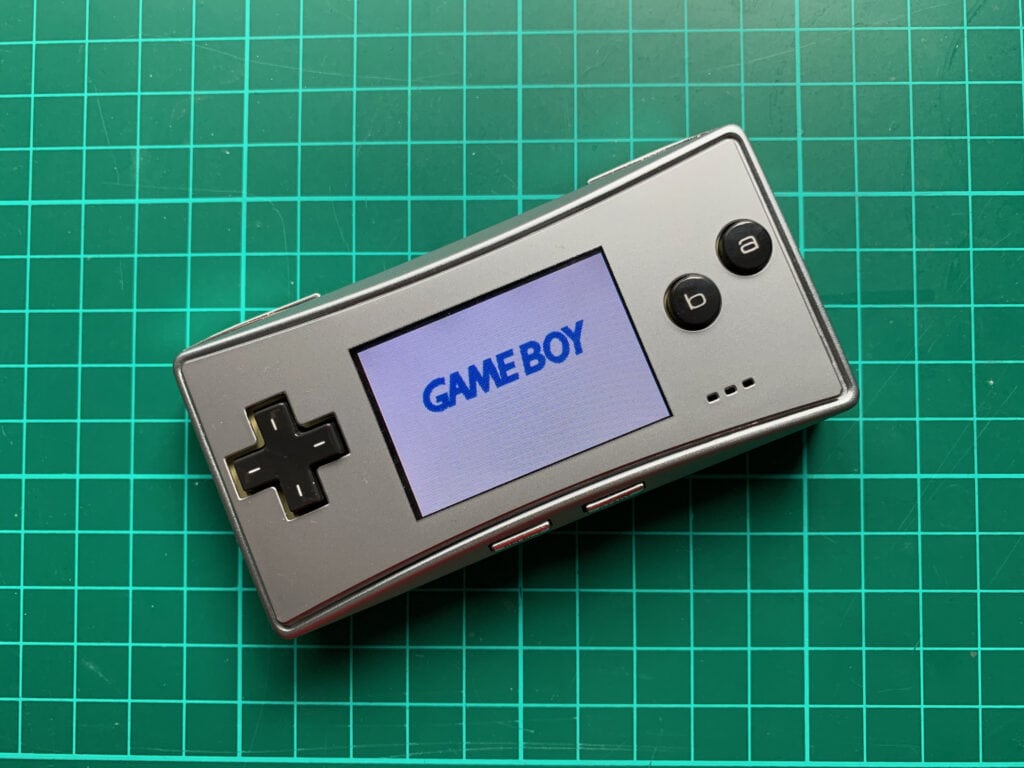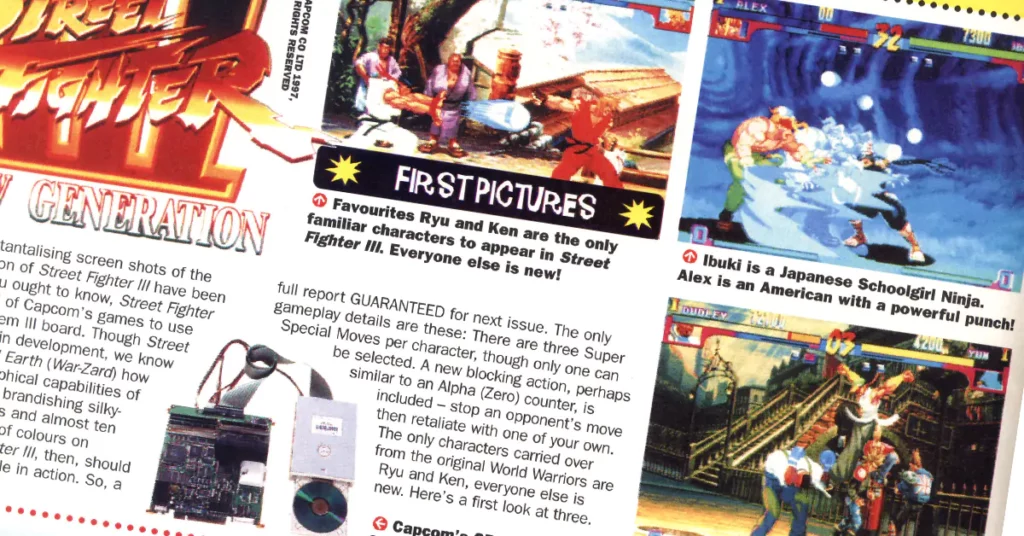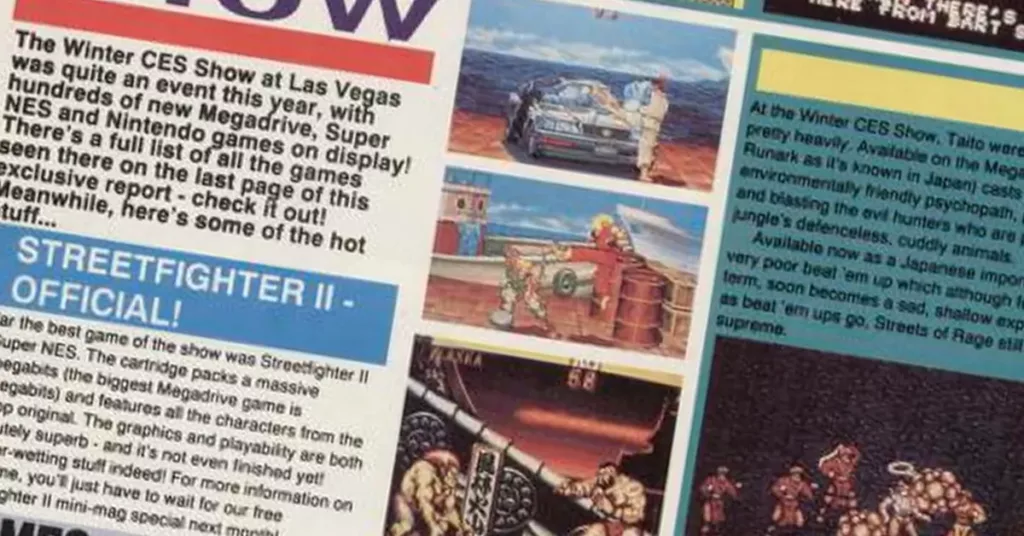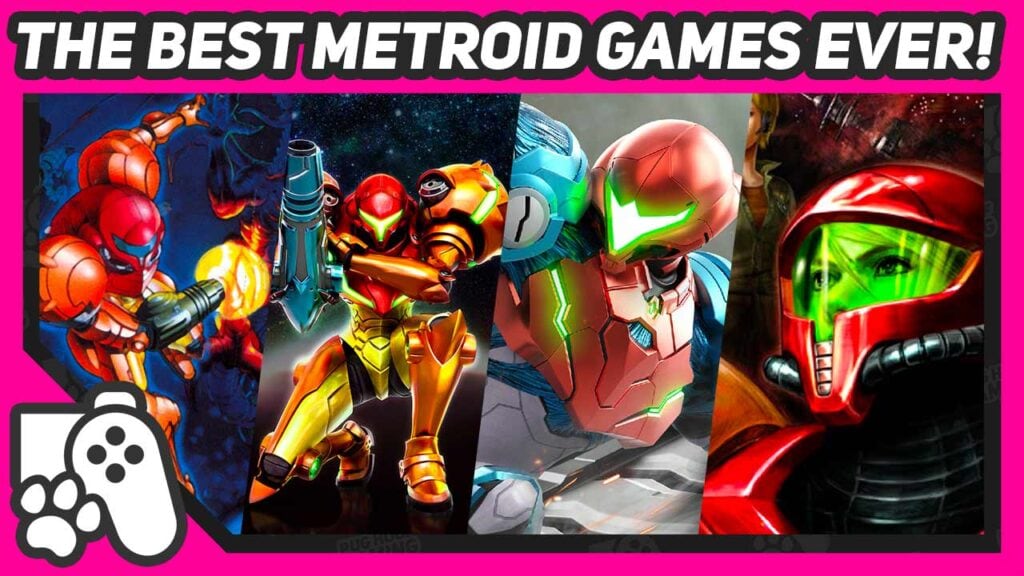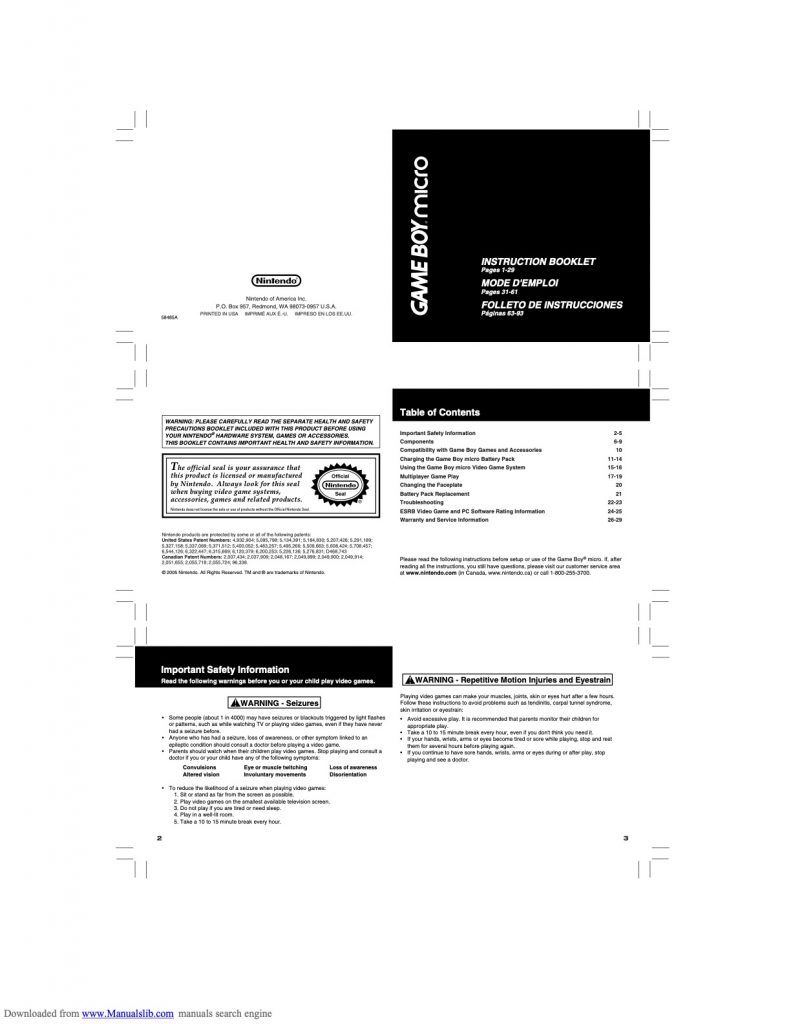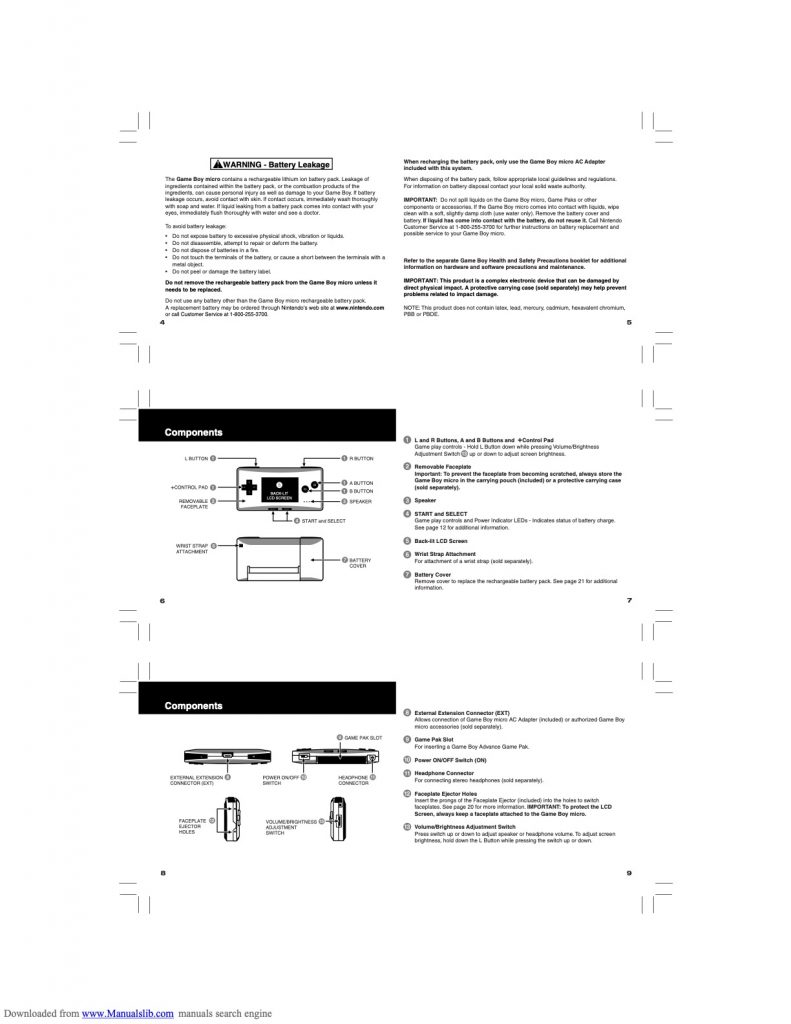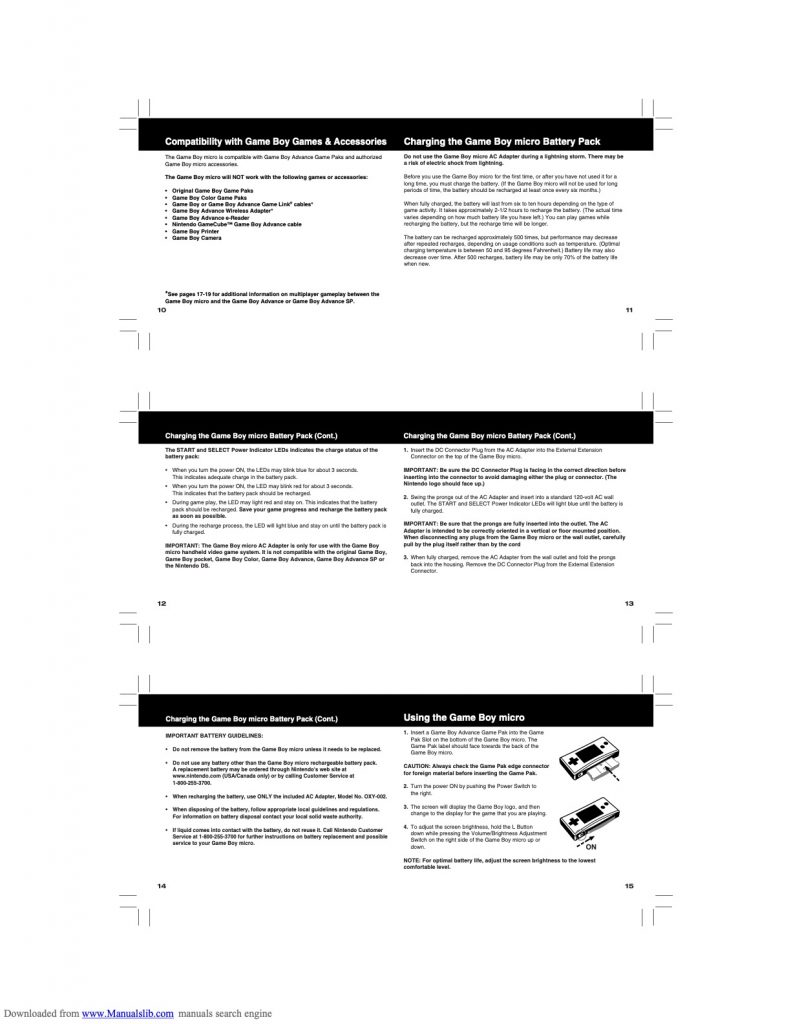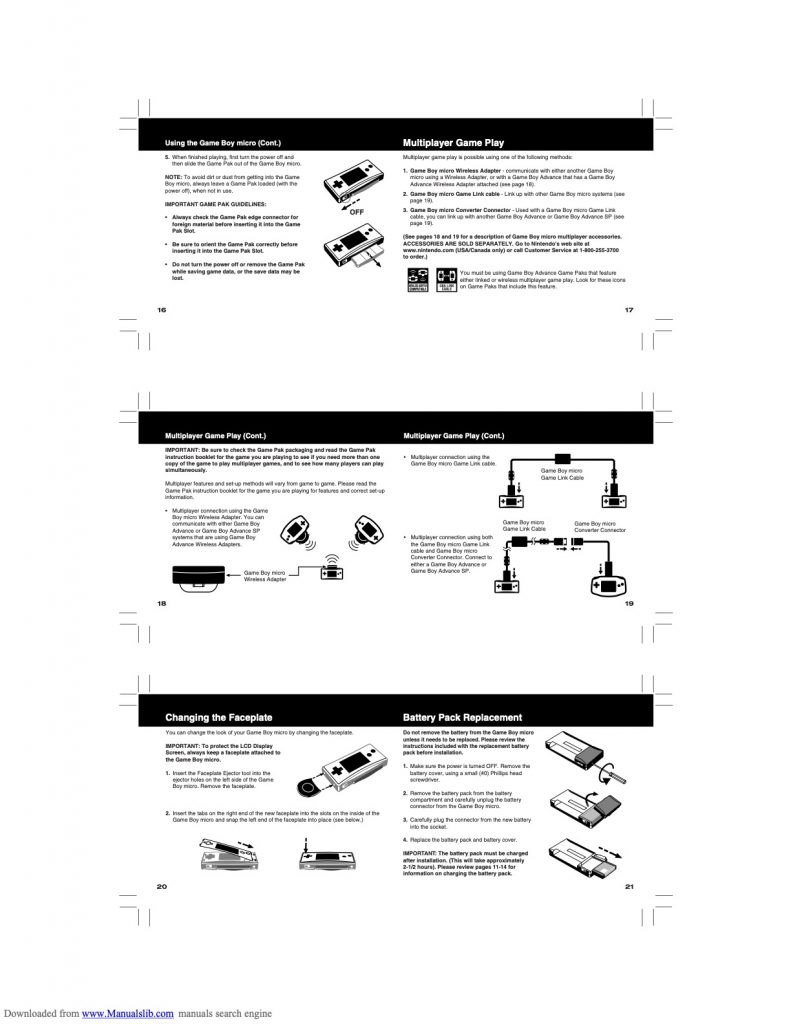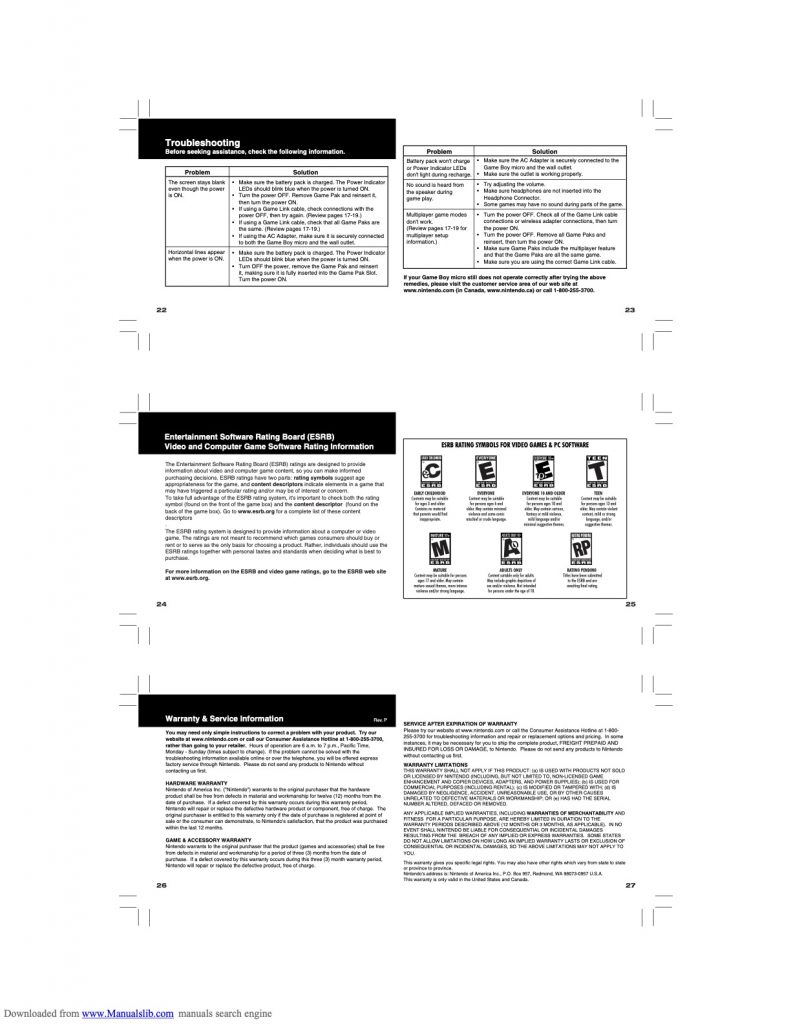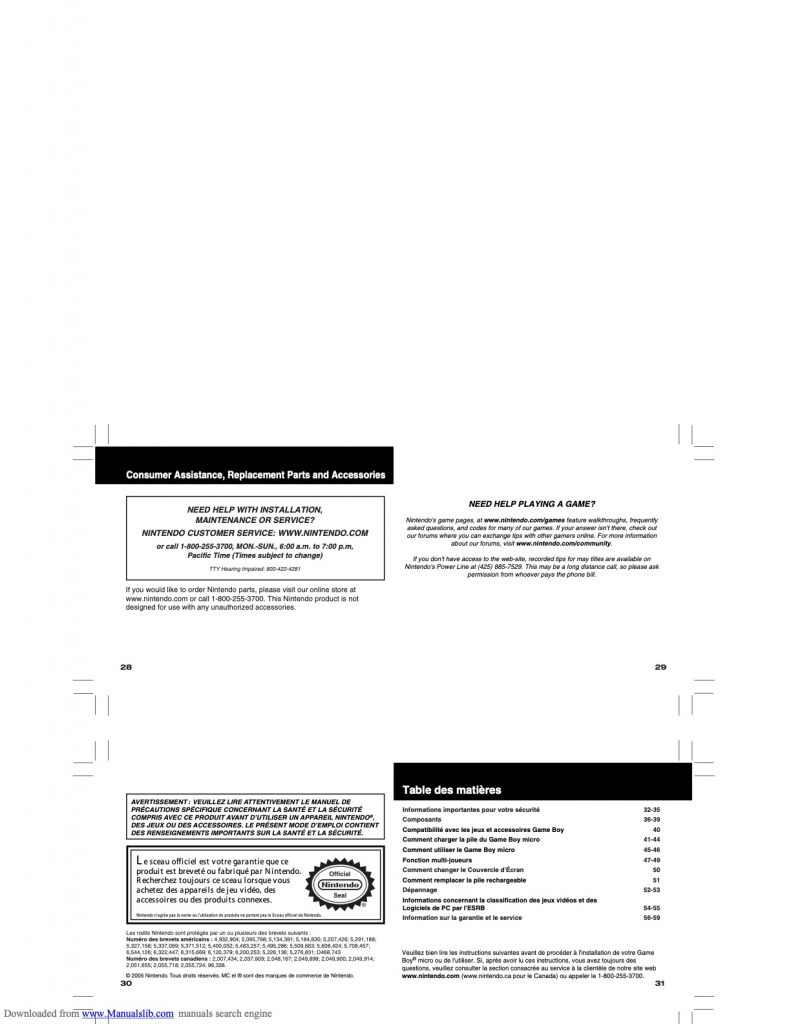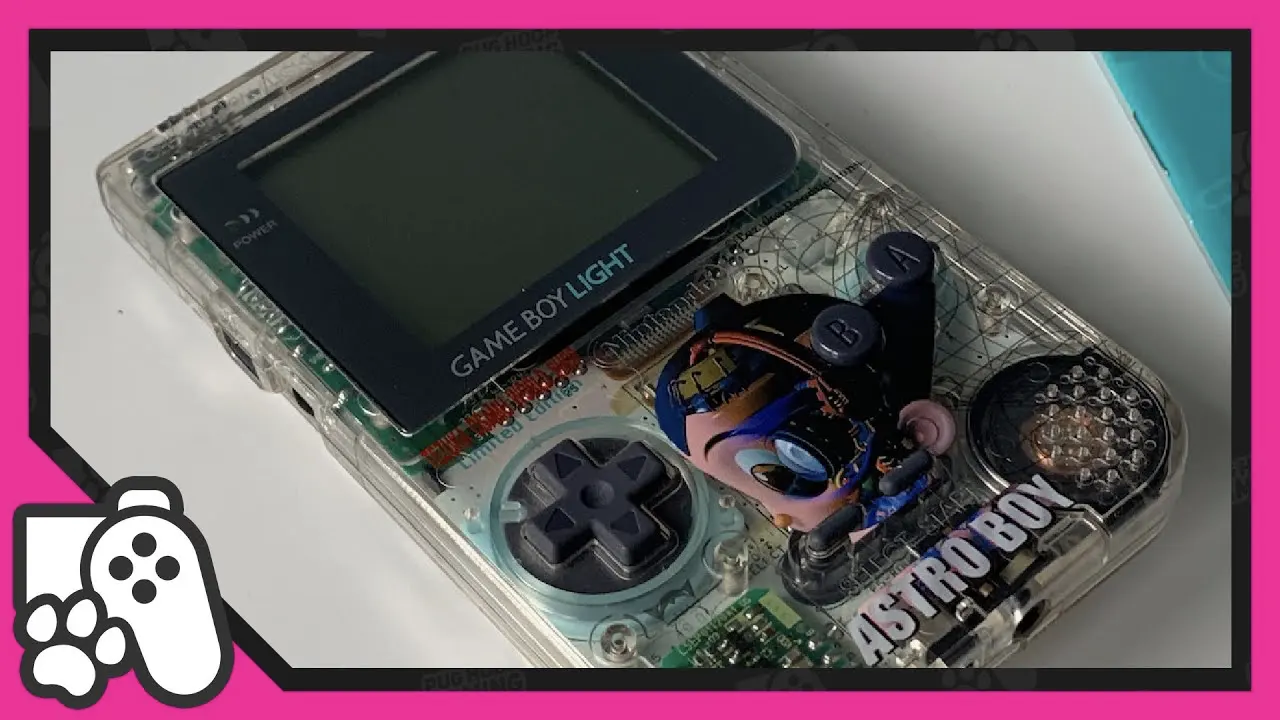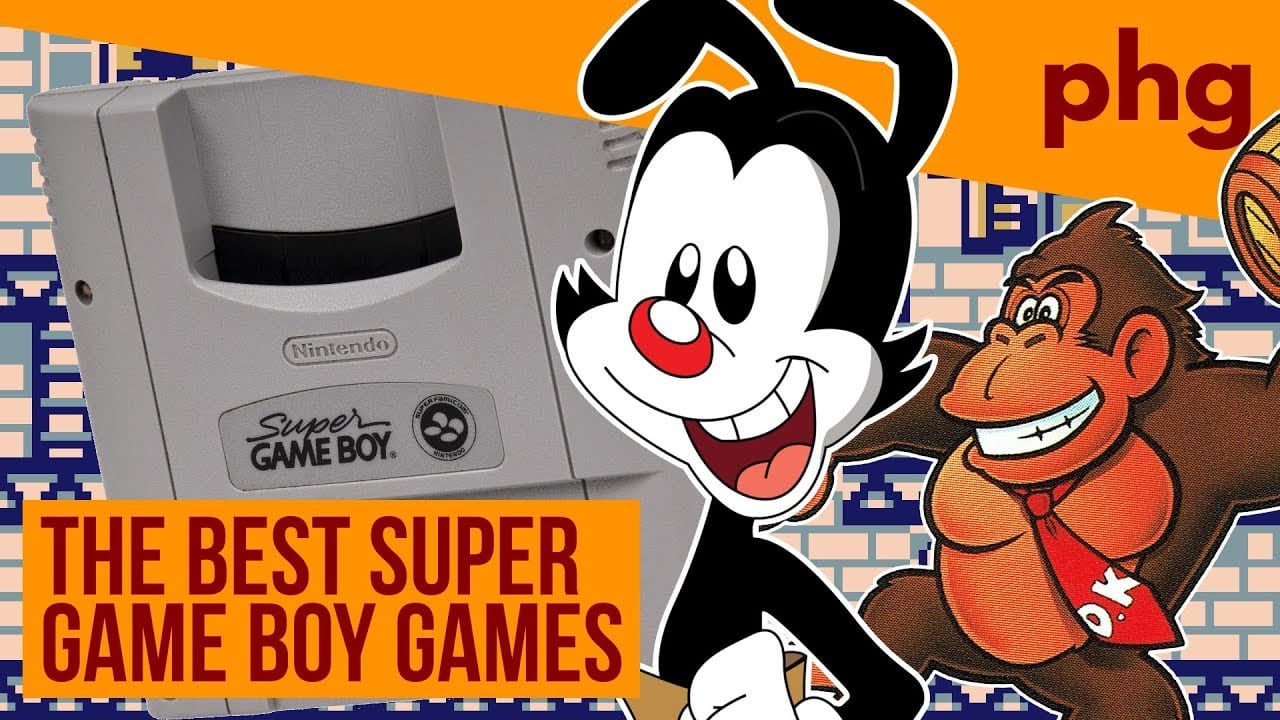A lot of systems have carried the Game Boy name. It’s a brand that weathered the changing tastes of video game players for over two decades. Whilst some may prefer the classic DMG model or even the Color – It’s the GBA line that holds a dear place in my heart. It was one of the first systems I purchased with my own money (with one of my first work pay packets, no less), and I’ve owned multiple models of this incredibly handheld system at one point or another. However, it’s the final physical system to carry this special lineage, the Game Boy Micro, that forever holds a special place in my heart. It’s not perfect by any stretch, but its delicate form factor has proven an invaluable travel companion over the years.
The video game hype machine is a very different one from the 2000s. As the internet became an important part of our daily lives, even before social media, games media was very much split between the dying print medium and 24/7 internet coverage. It was at this time that E3, the industry’s main media platform for announcements for upcoming products, had shifted from a place where insiders could be informed of the latest goings-on; to an event that fans could watch online and keep up with current events.
E3 2005 was arguably one of the greatest showings for Nintendo. This was the year that the Revolution was formally unveiled to the public (before it officially became the Wii a year later). The same year we’d see a proper trailer for The Legend of Zelda: Twilight Princess (when it was still a Gamecube exclusive). Meanwhile, their “third-pillar” handheld system, the DS was about to become a huge deal but had not yet hammered the final nail in the Game Boy’s coffin. In fact, the GBA had much more to give, as Reggie Fils-Aime literally pulled something new out of his jacket pocket.
Gameboy Micro Release Date
The Game Boy Micro first hit Japanese stores on September 13th 2005, closely followed by a North American launch a few days later on September 19th. For PAL regions such as Australia and Europe, the Game Boy Micro release date was two months later, on November 3rd and 4th, respectively. Finally, China would receive their own “iQue” branded version on October 1st, 2005 and North Korea would finally receive the Micro on November 9th, 2005.
Gameboy Micro Specifications
- Dimensions: 50×101×17.2 mm (2×4×0.7 in)
- Weight: 80 g (2.8 oz)
- Processor: 32-bit 16.8 MHz ARM processor (ARM7TDMI)
- Case Colors: various
- Screen: 51 mm / 2 inches, backlight with adjustable brightness.
- Resolution: 240×160 pixels
- Framerate: 60 Hz
- Colors: 512 (character cell mode) or 32,768 (bitmap mode)
- Battery: built-in rechargeable lithium-ion battery, up to 5 hours of battery life with top brightness and sound or 8 hours with both features on default
- Headphones: standard 3.5mm headphone jack.
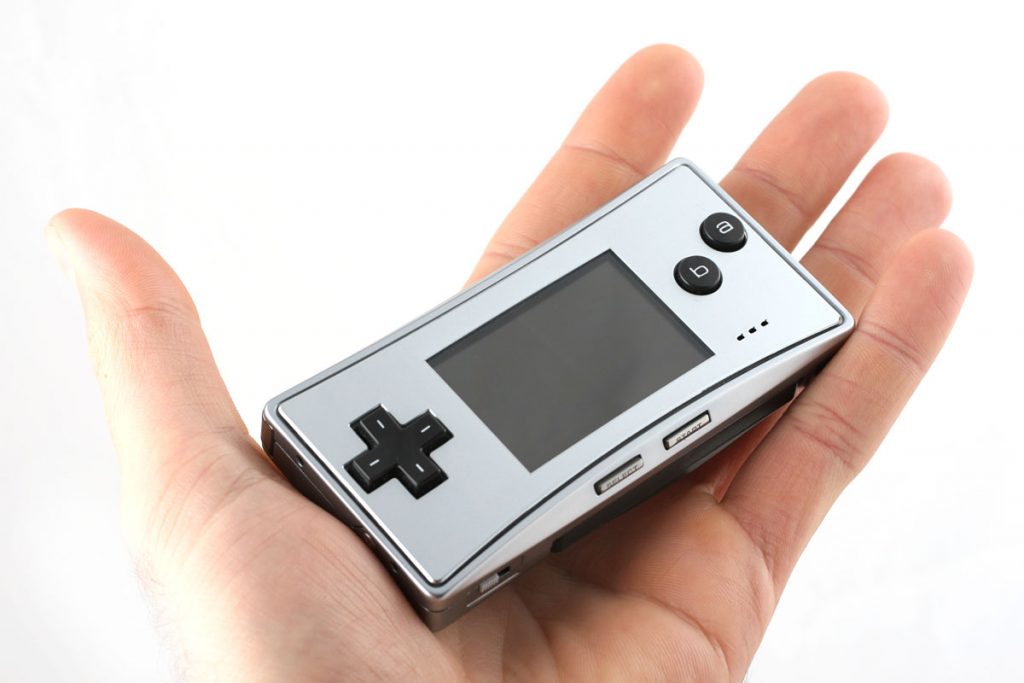
The Game Boy Micro Design
As alluded to earlier, the Gameboy Micro’s design is drastically different from what is usually expected from the usually plastic handhelds we’ve come to love. They had never designed a system using a casing that wasn’t plastic, while even the use of lettering and lighting seems very unlike what had come before (and since). A 2005 interview between Famitsu and one of the system’s main designers, Kenichi Sugino, reveals a bit about the reasoning behind this experimental approach:
The theme was “Can we make it smaller and lighter than the Game Boy Advance?” In making a GBA that was more portable than the SP and of a higher build quality, we wanted to have people who had stopped playing games, or had never played them in the first place, to enjoy games again. Of course, we are also aiming for customers who have already played on the GBA and SP. We want lots of people to think “This is something I want to touch”, so we’ve taken care in many areas [with the design].
Kenichi Sugino, Tuesday, July 05, 2005, Famitsu
The Game Boy Micro’s tiny form factor is still an incredible thing to behold. The console really is small enough to comfortably fit in the back pocket of a pair of jeans – It’s smaller than the NES controller, yet feels relatively comfortable to hold and play (to my hands, anyway). At the rear of the system is a hold to fix a wrist strap (a feature that is absolutely keeping in tune with the trend of the time); and remarkably, when a normal-sized GBA cartridge is inserted, the system remains completely flush (When using a larger cart like Wario Ware Twisted, not so much!).
Retro News: February 1997 – Virtua Fighter III On The Saturn!
Retro News: February 1992 – Legal Eagles, Sparrows & The Game Girl?!
The Best Metroid Game of All Time – The Road To Metroid Dread, Ep. 17
Moving to a smaller screen does give the illusion of a higher fidelity screen, and it really does make the sprite-based visuals of GBA games, absolutely pop. In addition, five levels of brightness allow the user to find the perfect view no matter what sort of environment you’re playing the system.
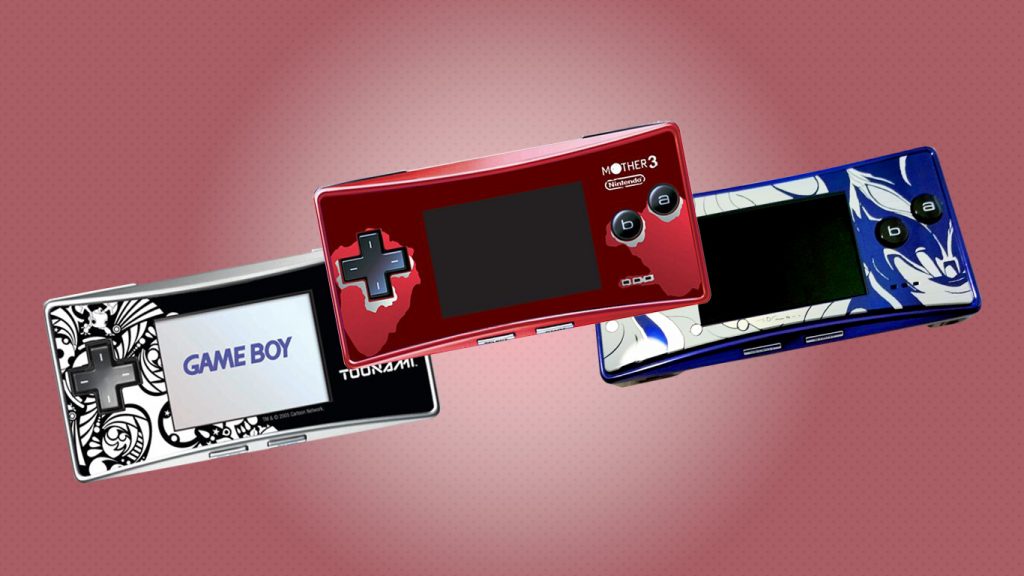
Swappable faceplates also gave an element of customisation never seen before on a Nintendo device. Whilst the company were always known for different themed editions of their handhelds, you were always stuck with whatever you had bought. With the ability to change the faceplate, there was the potential to not only give users the option to add a more personal touch to their system but potentially there could have even been an element of collectability to the faceplates available. Plus, if the face of the system was scratched, you’d only need to replace the faceplate, as opposed to trying to repair the screen itself.
Unfortunately, the faceplate feature was very quickly pushed aside. Nintendo of America only made official faceplates available via their website, and they were never available in physical stores there. The European side of the business completely removed any mention of faceplates in all of their packaging, manuals and marketing materials; with there being no official way to obtain faceplates at all, even from the company themselves – The tool used to change faceplates was even removed for the European releases. The only option was to purchase third-party replacements, but they weren’t exactly flooding the market (unsurprising, considering that the DS ended up being more of a successor to the Game Boy Advance than anyone could have predicted). From personal experience, even the official faceplates were relatively easy to scratch by accident, with the purchase of protector film and a storage case absolutely required if you wanted to keep the system in pristine collection.
Game Boy Micro Manual & Usage
The Game Boy Micro retains similar functionality to its predecessors. As with other Game Boy systems, a soft reboot can be triggered in most games by pressing A, B, Start and Select together. In addition, the GBA line does have a Sleep Mode function, available on a game by game basis – In a supported game (such as Metroid Fusion), the game can be put into Sleep Mode via the game’s pause menu. During Sleep Mode, the Game Boy Micro screen is switched off to reduce battery life, but the system’s Select and Start buttons intermittently flash blue to indicate that the system is still in Sleep Mode. The system can be taken out of Sleep Mode by holding L, R and pressing Select.
As for functionality exclusive to the Micro, there are five brightness levels available for the screen. This can be changed by holding the L shoulder button, and pressing the volume up/down buttons to adjust the brightness of the backlight as required.
How Many Game Boy Micro Consoles Were Sold?
Despite initial good sales in Japan, total sales were well short of their targets; with Satoru Iwata admitting that the combination of increased focus on the DS system, and the failure to market the Micro to prospective consumers led to the console’s failure:
…toward the end of 2005, we had to focus almost all of our energies on the marketing of DS, which must have deprived the Micro of its momentum…
Satoru Iwata, Nintendo Co., Ltd Corporate Management Policy Briefing, June 2007.
…Overseas, we were unable to dispatch the real attractive nature of this product in the first place. More specifically, we showed this product at E3 2005 for the first time to the public, and those who have watched Micro were pretty much impressed. Because a number of people, distributors, software developers and publishers were all saying that Micro could sell, we somewhat believed that we would just need to take the ordinary marketing approach, say, by saying that we will launch the new Game Boy model. Fact of the matter is, however, those who were impressed with Micro were the ones who have physically touched and felt Micro in their hands. However, the actual consumers had to evaluate Micro without touching them. In the end, we failed to explain to consumers its unique value and they concluded that Micro is not worth the price they have to invest…
…Simultaneously, it was the time when we had to expand DS sales, so we had to put more effort on DS, which were not contributing to the sales of Micro. We have to learn the lesson that we overestimated the success potential of Micro. Also, we had to be more careful about how we should evaluate the impression of people who have actually touched and felt our products and who have watched some of our advertisements only…
The Micro was a failure; selling just 2.42 million units worldwide (as of April 2007). That sounds like a large number, but when you look at the whopping 81.51 million units sold for the entire Game Boy Advance line (as of April 2017), you can imagine that bosses were massively disappointed with the results – Especially the trailing sales in Japan, where just 25.20% (0.61 million) of total sales went to, compared to North America’s 39.25% (0.95 million) and Europe’s 35.95% (0.87 million). It’s no wonder the system (alongside the whole GBA line) was discontinued in 2008.
10 Game Boy Games That Helped Me Fall Madly In Love With The Nintendo Icon
Astro Boy Game Boy Light – The Best Gameboy?
The Best Super Game Boy Games To Play On Your Super Nintendo
Unfortunately, it’s easy to see why the Micro failed. The DS had quickly gone from an experimental “third-pillar” system to the company’s main money-spinner, and after four years on the market – The Game Boy Advance family of systems was beginning to look tired and outdated; especially after the 2004/2005 release of the Sony PSP, a system that really shows the age of Nintendo’s 32-bit, sprite-based handheld. Consumers saw little reason to buy a new GBA while two newer and more technically proficient systems were on the market – Especially when this new variant didn’t work with some of the games and accessories that the older (and now cheaper) models could. At around this time, even secretly refreshed the GBA SP with the now infamous AGS-101 model, with a brighter screen (and at a larger size than the Micro’s too), further making the newer system a hard sell.
Examining Game Boy Micro’s Flaws
Of course, I could gush about the Game Boy Micro all day – But that doesn’t mean I can’t pick apart the system and lay all of its flaws bare. and unfortunately, the Micro is subject to a large number of issues that might turn many players off.
For a start, that small form factor might well be great for some players – But it’s definitely going to be a subjective thing for some, with bigger-handed players possibly ending up with cramps from wrapping their hands around this tiny device. Similar criticism could be made regarding the small screen size as well, but this is also completely down to individual user cases.
As for other, more widespread issues; the change the EXT ports to a different type is a real problem – Having to use different chargers, link cables, etc. and losing the ability to use other accessories is an irritating change for any user. This is further compounded by the removal of backwards-compatibility (which is always a beloved feature for any system).
An issue that bothers me is the noisy headphone output. While it’s great to have a proper headphone jack (having to have a separate connector to attach headphones via the Game Boy Advance SP’s EXT port was irritating), I have always noticed a humming sound when using headphones. It’s not a deal-breaker, but it’s one of those things you can’t help but get bugged by, once you know it’s there.
Finally, my biggest issue with the Gameboy Micro is the faceplates. On paper, it’s a great idea – Who doesn’t like easy ways to customise the look of their handheld system? Unfortunately, the execution is considerably lacking – I mean, they weren’t even officially supported here in Europe! The official faceplates are unusually delicate for a Nintendo accessory – They’re difficult to remove without the specific tool, and it’s common for people to snap the pegs holding them in place. What makes it even worse, is that they scratch so easily – I once got a massive scratch down one the faceplate of one of my GB Micro systems by wiping a bit of dirt off with my finger. It’s one of those systems where you definitely need either replacement faceplates or protective film.
Conclusion – Is This The Best Gameboy Advance?
I’m torn, to be honest. If you haven’t guessed, I do rather like the Micro. It isn’t perfect by any stretch, and the beautiful screen has been long-superseded by the wide array of modifications available to the original GBA and SP models. But, there’s something so elegant about that aluminium casing; it’s incredible portability and that sharp-as-nails screen, that ensures that I always keep my Micro close to hand.
For years, I’d keep that Micro in my pocket during the day, just in case I had a spare few minutes to do some grinding in Final Fantasy V Advance, or tackle a quick race in Mario Kart Super Circuit. I could have never truly done that with prior handhelds, without having some sort of bag/carry case with me. Sure, when at home I’d probably play on the Game Boy Player or even the original GBA model – But the Micro remains my favourite way to play when on the go. If you can find one for a good price (and that’s a big “if”), you might be surprised by how enjoyable it is to play.
